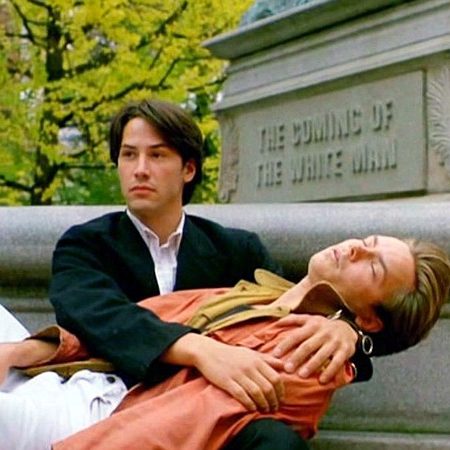
Adept at treating fables as if they were real and daily life as if it were a fable, Guillermo del Toro goes all the way into romantic lunacy with The Shape of Water. The director of The Devil’s Backbone and Pan’s Labyrinth shows how a mute named Eliza (Sally Hawkins) and an aquatic creature who may be a river-god can connect despite conclusive anatomical and physiological differences. A love story between man and fish, The Shape of Water also depicts, less interestingly, the hysteria of the national security state in the years before the Cuban Missile Crisis. But the story is familiar, another example of del Toro the (co-)writer failing del Toro the director. He wants to awe yet the results impress, frustrate, or bore.
Aquas and teals are cinematographer Dan Lausten’s favorite tones: the aqua of water and the teal of a caravel-sized Cadillac get equally ravished. In Eliza’s humdrum life she needs any kind of color. The company of her neighbor Giles (Richard Jenkins), a gay man who sketches advertising art, has its charms, but she brings a monastic concentration to the rest of her routine: boiling eggs for lunch, using her hat as a headrest on the bus, masturbating in the tub. Better than Giles at any rate, who clumsily hits on the wrong kind of guys at the diner he frequents and has no palate for good pie. She and her pal Zelda (Octavia Spencer) work as janitors in Baltimore’s Occam Aerospace Research Center, where one day Colonel Richard Strickland (Michael Shannon) brings back a creature he caught in the Amazon. This is the era of Sputnik, and if Americans are to beat the Soviets in the space race they have to send a living creature into orbit. But the creature, known in CIA jargon as the Asset, has other ideas: enraged, it slices off a pair of Strickland’s fingers with its claws, which leads to a maladroit re-attachment surgery (del Toro returns to those blackening fingers again and again when he needs dark humor; they even smell).
Following the dictates of woman-taming-the-savage-beast fiction, Eliza is charmed by the Asset during a routine mopping of the lab. First she shares her egg lunch, next she’s smuggling in Glenn Miller and His Orchestra’s “I Know Why (And So Do You).” It has won her heart. With the help of Giles, Zelda, and Hoffstetler (Michael Stuhlbarg), a scientist who plead on the Asset’s behalf before an unbending Strickland, she hatches a plan to get him out of the lab and into a canal. Complicating the ordeal: Hoffstetler is a Soviet spy whose paymasters want the creature dead — anything to stop American progress.
There’s an awful lot of story in The Shape of Water, and I will just note that Strickland, in del Toro’s worst infelicity, goes home to one of those fifties households seen only in movies where the kids want to watch Bonanza and the only attention his wife gets is when he has sex with her as if he were a drill press. Del Toro goes for easy contrast: the robo-coitus of the Stricklands versus the magical sex that Eliza and the Asset enjoy once she’s purloined him and hidden him in her bathroom. These scenes afford the audience their first closeup glimpses of the wonders wrought by del Toro and Paul D. Austerberry and his production team. Graced with eyelids that seem to turn on their axis and scales that emit an azure glow, the Asset is a gamine version of the Creature from the Black Lagoon. When Giles exclaims, “It’s beautiful!” I believe it. Hawkins, a game screen presence in Happy-Go-Lucky and her Oscar-nominated turn in Blue Jasmine, doesn’t condescend to Eliza; she’s committed. Del Toro rewards her concentration by filming the big sex scene as a aquatic fantasia, albeit in Eliza’s cramped bathroom. Water leaks into the movie theater below.
Fans of Edward Scissorhands and King Kong will recognize the central trope. Shades of Pygmalion and My Fair Lady flicker past too (note the Hawkins character’s name). When Eliza sways with a broom, the ghost of Fred Astaire is smiling down. Carmen Miranda and Mr. Ed are seen in passing glimpses on the tube. The Shape of Water, then, is an allusive work, but this fact doesn’t make the film a disappointment — the mix of sentimentality and violence does. As Strickland, Shannon doesn’t do anything we haven’t already seen from him; he’s played the repressed law and order apparatchik so many times that he should phone bank for police union fundraising commercials. Besides inflating his film’s running time, Del Toro can’t resist underlining how evil Shannon is; with each appearance he bored me. While Richard Jenkins brings his usual well-modulated benevolence, del Toro treats his homosexuality as a means to feel sorry for Giles; and anyway if The Shape of Water really wanted to be subversive, why doesn’t del Toro give Giles and the Asset their own sex scene? The script makes clear that Giles needs nookie more than Eliza does. Better than a life chasing racist diner employees selling crap key lime pie.
A gay man, a black woman, a mute, bound out of love for a fish-man — outcasts in Cold War America! The manginess of del Toro’s writing shows in the manner in which his quartet doesn’t transcend themselves, and I include the Asset. As startling and beautiful as the creature is in conception, he remains an object; except for the final scene, we get no scenes from its point of view, no idea of how he views this world very different from his Amazonian tributary. By the time The Shape of Water ends, I felt as if I’d seen a precocious art director’s audition tape.
GRADE: B
